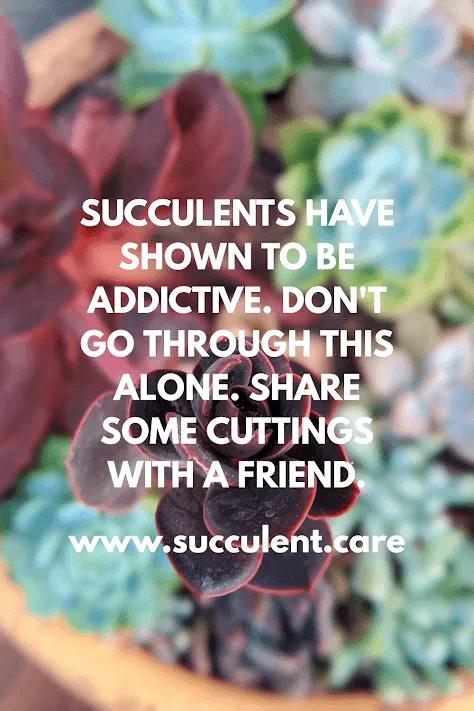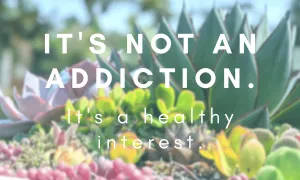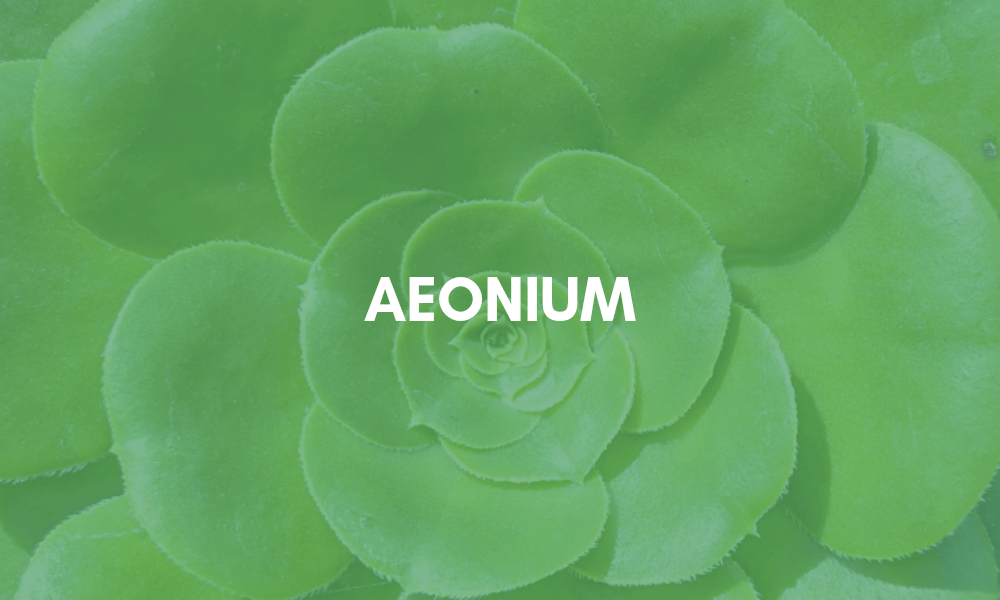Aeonium Care Guide & Identification
Browse through these Aeonium succulent identification cards and click on the picture for more detailed information on how to care for each specific species.
As an Amazon Associate I earn from qualifying purchases.
Aeonium General Care Guide
Aeonium succulent species are native to sub-tropic areas like the Canary Islands and Morocco. Thus, they are not cold hardy. They also don’t tolerate extreme heat well. If you live in a mild climate, these succulents are great for you! Elsewhere, you’re going to want to bring yours indoors during extreme cold or hot weather.
Indoors, Aeonium succulents will need as much light as possible near a sunny window or under a supplemental grow light to maintain their compact rosette at the ends of their branches. They don’t tolerate freezing temperatures, so you’ll need to bring them indoors in the winter if you live below zone 10.
Aeonium succulents are adapted to mild climates near the coast and can handle more frequent watering during their winter growing season. In the summer months, these succulents go dormant and don’t require the standard “Drench & Dry” method of watering at that time. Just water them enough so that their roots don’t completely dry out. See my guide to watering succulents here.
Fertilize Aeonium succulents only during the growing season with a balanced fertilizer or one that has little nitrogen content. Dilute the fertilizer to at least half strength because they are susceptible to fertilizer burn. See my guide to fertilizing succulents here.
Aeonium, like most other succulents,need quickly draining soil with lots of inorganic amendment. Their natural habitat is on rocky, coastal cliffs so keep that in mind when mixing your soil. See my guide to succulent soil here.
Propagate your Aeonium only during the winter growing season. Take stem cuttings when the weather has cooled down and they have come out of their summer dormancy. These succulents can grow very tall, so beheading them and taking cuttings can keep them short, but full. See my guide to propagating succulents here.
Aeonium species are native to coastal, island cliffsides and have adapted to the bright sunshine. They need bright natural light, if possible. Otherwise, make sure to have a supplemental grow light indoors. See my succulent light guide here.
Aeonium flowers mean that plant has reached the end of its life as they are monocarpic succulents. Their blooms are tall and showy and attract pollinators. Cut the bloom off after it is spent or leave it on and wait for more branches to form on their own. See more monocarpic succulents here.
Aeonium succulents are rosette shaped and take on a wide variety of colors and textures. Many species tend to branch and create aesthetically pleasing shrubs if left alone. The leaves have uneven, serrated margins.
Aeoniums tend to develop aerial roots from their stems for stability as their underground root systems are relatively small and shallow compared to their size.
The name Aeonium comes from the ancient Greek word “aionos” meaning ageless.
Aeonium succulents are prone to mealy bugs, aphids and spider mites. Mealy bugs are the most common pest though.
Aeonium go dormant in the summer, so they may drop leaves. That is totally normal.
They are also prone to bruising from being bumped or handled. These marks can’t be removed, and will just have to grow out with time.
Aeonium are not known to be toxic or poisonous.
Aeonium actively grow in the cooler months from Fall to Spring. They are dormant in the summer. Learn more about dormancy in succulents here.
Aeonium are NOT cold hardy as they originate from the subtropical Canary Islands and Morocco which have a hot summer and warm winters.
As an Amazon Associate, I earn from qualifying purchases.
Community
Join us in the SUCCULENTdotCARE Facebook Group to share pictures, ask questions and talk about all things succulent!
Instagram
Follow me on Instagram for more succulent pictures and funny succulent memes to get you through the day.

Where to Buy Succulents Online
I receive a small commission when you purchase anything through my links.


